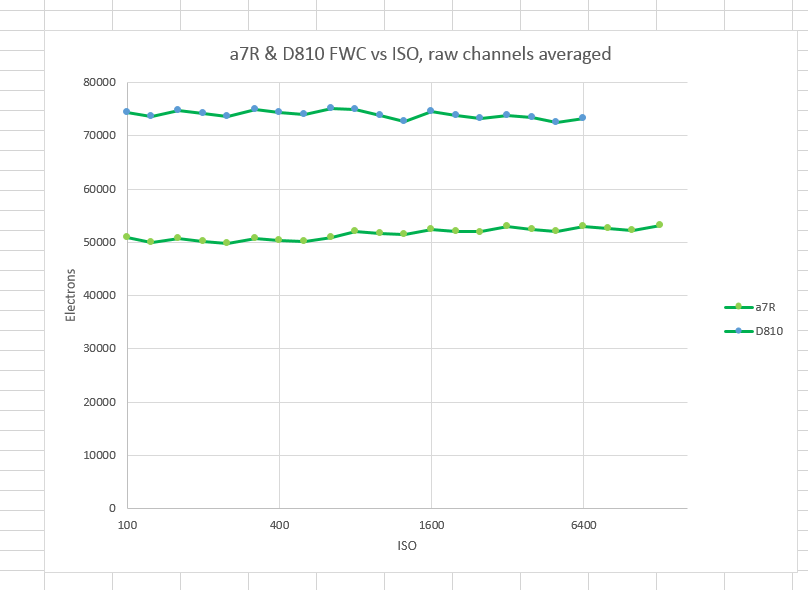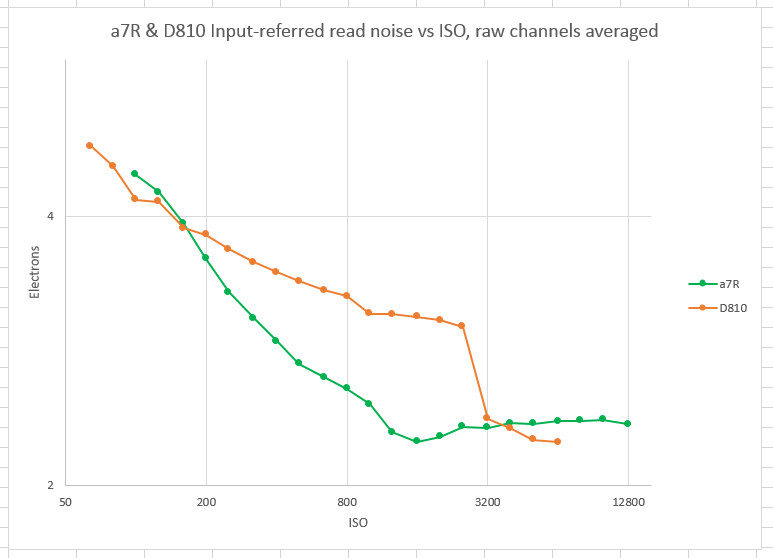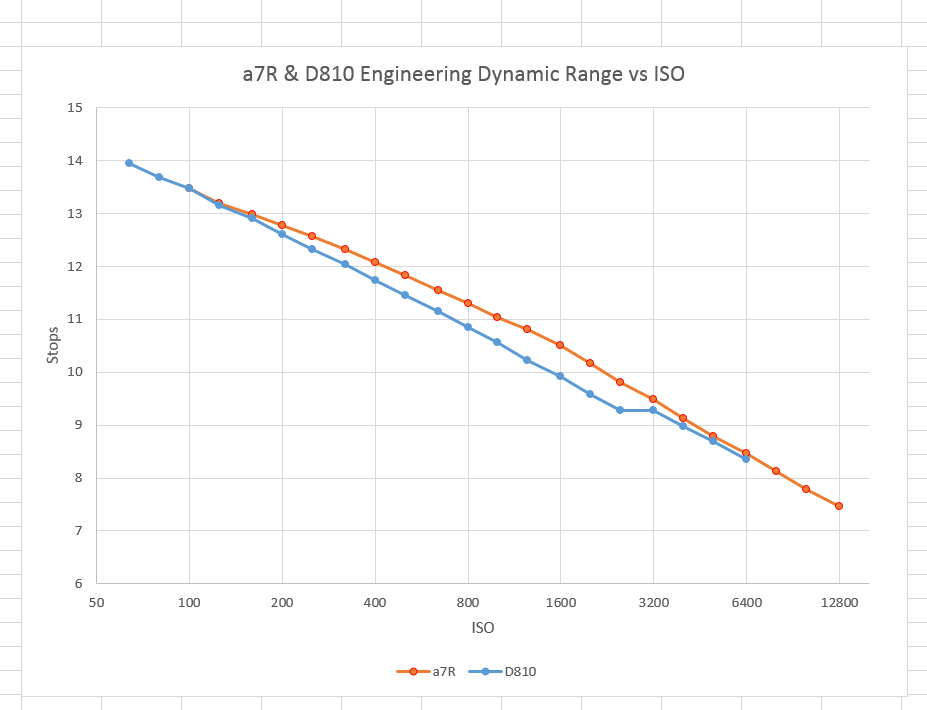Now I’m ready to tackle the question that interests at least some of you: how does the sensor in the Nikon D810 compare with the one in the Sony alpha 7R?
The D810 has greater full well capacity:
But the a7R has lower read noise through much of the ISO range:
When you put those things together, the D810 has a greater engineering dynamic range, but you have to go below ISO 64 to get to the part that’s better than the a7R:
If we concern ourselves with Claff photographic dynamic range — and I think we should — here’s how the two cameras compare, with the a7II thrown in for good measure (we can do that fairly, even though the a7II has lower resolution, since the Claff PDR takes resolution into account):
ISO setting sensitivity is not standardized among camera manufacturers. If we look at Claff PDR with the ISO settings expressed as stops over base ISO, here’s what we get:





Many thanks Jim,
Well, it seems that a7r is about 1/3 – 2/3 step down to the D810! And the D810 (jun 2014) is about 1 year younger then a7r (oct 2013) and have new engine technology in the cam!!
For only 1 Step (rounded) the a7r is still very good. And, if Sony would update the firmware, maybe the step would be by 1/3.
For less noise and high dynamic range ISO 64 on the D810 is awesome! Let us hope, that sony will come close with the replacement of the a7r this year?!
Does your testing reflect the lossy compression of the A7R, or are you testing sensor pre-lossy-compression? How many stops does the lossy compression detract, do you think, roughly?
Thanks,
Art
I have no way to observe the uncompressed images with the a7x cameras, and neither does anyone else who’s not employed by Sony.
Zero stops. Sony lossy compression doesn’t affect DR at all, unless you believe that the a7x are 14 bit cameras.
Jim